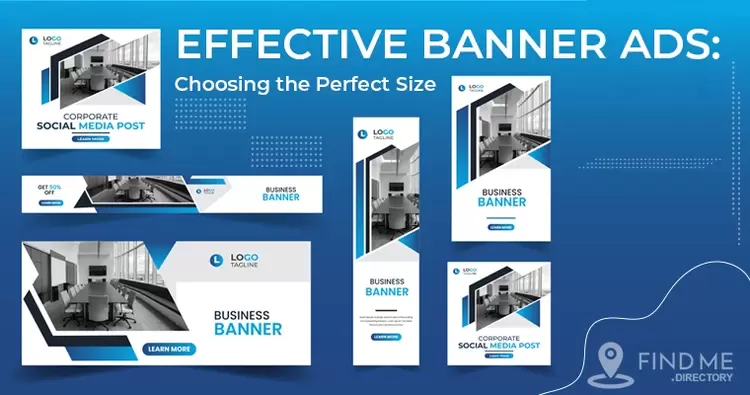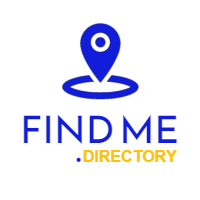
Discover the top-performing banner ad sizes for your ads and optimize your advertising strategy with the most effective banner sizes to maximize engagement and conversions.
Banner ads have become a cornerstone of online display advertising, seamlessly blending into websites to catch your eye and lead you towards action. They are loved for their knack to convey messages effectively, boost brand recognition, and drive conversions. What's more, banner ads are budget-friendly. Advertisers can set their spending limits, pinpoint specific audiences, and track campaign performance closely. With that being said, let's now take a closer look at what banner ads are, how to choose the best banner ad sizes, and a lot more.
Banner advertising refers to the use of rectangular graphic displays designed to promote products, services, or brands on websites or online media platforms.
Banner ads provide extensive reach and precise targeting capabilities. They can be displayed across various websites spanning multiple industries, ensuring exposure to a wide and diverse audience. Moreover, advertisers can leverage advanced targeting options such as demographic filters, geographic preferences, and user interests to enhance the relevance and impact of their ads.
Publishers strategically utilize the high-traffic zones on their websites to showcase banner ads, commonly positioning them at the front, bottom, or side of a page. Advertisers acquire this advertising space either through ad networks or direct negotiations.
But before we delve into the standard web banner sizes and top-performing banner ad sizes, let's discuss what display advertising is.
Display advertising involves banner ads on a publisher's webpage or social network platform. These ads can take the form of text, images, or videos, with the main objective being to encourage visitors to click on them, redirecting them to the advertiser's page.
Typically, display ad campaigns are conducted through platforms like Find Me Directory, which play a crucial role in facilitating audience targeting capabilities and ensuring the appropriate selection of ad formats.
Banner ads serve the dual purpose of informing visitors about brands, products, or services and enticing them to progress further in the purchasing process. Successful banner ads incorporate creative messaging, graphics, and a compelling call to action (CTA) designed to captivate visitors and spark interest in the advertiser's offerings.
In the realm of conversions, retargeting plays a pivotal role, given that 96% of visitors do not convert during their initial visit. Banner ads prove effective not only in generating leads but also in the practical application of retargeting users. Retargeting is executed through a cookie mechanism. When a visitor clicks on an ad and is directed to the advertiser's page, a pixel is embedded in the visitor's browser. This pixel tracks the user's online activities, enabling advertisers to deliver highly personalized ads across the user's primary online touchpoints. Banner ads enable publishers to monetize their websites and empower marketers to raise awareness of their products and services, ultimately contributing to increased sales.
If you are a publisher with a substantial monthly visitor count, a highly effective strategy for monetizing your website involves incorporating banner ads. To seize this opportunity, you can offer space on your web pages for business promotions by partnering with display ad networks.
Here's a step-by-step overview of the process:
- Sign up with a display network: Begin by registering with our display network or you can choose another vendor to display your ads on our website.
- Receive and implement a script: Once registered, the display network will furnish you with a script to embed on your website. This script is designed to seamlessly showcase banner ads, alleviating the need for manual intervention on your part.
- Automated display of banner ads: Implement the provided script, and your website will automatically display banner ads. This automated process allows you to concentrate on content creation without the hassle of managing ads manually.
At this time, we do not offer compensation for clicks. This type of display provide earnings that are tied to the number of clicks the ads on your website receive. For each click, you receive compensation, creating a straightforward and performance-driven monetization model.
For advertisers seeking to enhance brand visibility or elevate product and service sales, a strategic approach involves advertising on publisher sites that cater to specific niches or those with substantial traffic. Regardless of the chosen avenue, the objective remains consistent: directing traffic to your site through the utilization of banner ads.
Here's a concise overview of this process:
- Sign up with a display ad network: Commence the process by enrolling with a display ad network. This network will serve as the conduit for integrating your banner ads into the chosen websites.
- Select the type of website for ad placement: Make a strategic decision regarding the type of website where you wish to display your ads. Whether niche-specific or high-traffic general sites, this choice is pivotal to reaching your target audience effectively.
- Automated placement on preferred websites: Once enrolled and preferences are set, the display ad network will automatically position your banner ads on the selected websites. This automated placement streamlines the process, allowing you to focus on achieving your advertising goals.
- Payment based on performance: Your payment structure is typically tied to either per-click or per-impression metrics. This means you pay based on the number of clicks your ads receive or the number of times they are displayed, providing a flexible and results-driven approach to advertising.
Banner ads size matters because they impact visibility, engagement, and overall effectiveness. Different sizes can impact user engagement, visibility, and click-through rates.
Here are a few reasons why ad size matters:
- Visibility: Larger banner ad sizes tend to attract more attention as they occupy more screen real estate. They are more likely to be noticed by users, increasing the likelihood of engagement and click-throughs.
- Compatibility: With the diverse range of devices and screen sizes available today, choosing the right banner size ensures platform compatibility. Responsive design and adaptability are crucial to ensuring that your ads display properly on desktops, mobile devices, and tablets.
- Ad Placement Opportunities: Websites have designated spaces for specific banner ad sizes. By selecting popular sizes, you can take advantage of prime ad placements and increase the visibility of your ads.
- User Experience: Banner ads enhance the overall user experience by seamlessly blending into the website's design. Ads that are too large or intrusive may disrupt the user's browsing experience and lead to negative brand perceptions.
When it comes to choosing the right ad sizes for your website, the many options available out there can feel overwhelming. However, you can simplify the decision-making process by considering the preferences of advertisers who often favor specific web banner ad sizes.
By narrowing down your choices to those preferred sizes, you can streamline the selection process. Nevertheless, it is crucial to evaluate how the chosen ad size will affect your content and the overall user experience before making a final decision.
Here are some of the top-performing banner ads:
- Leaderboard Banner Ads: Size in Pixels: 728x90. Leaderboard banner ads are quite popular and are usually positioned at the top of a webpage. Advertisers find it favorable due to its generous space for showcasing their message, making it a highly impactful format for enhancing brand recognition. Moreover, its greater viewability further enhances its value, allowing you to maximize its selling potential.
- Large Rectangle: Size in Pixels: 336x280. This particular size is frequently utilized for display ads, offering advertisers sufficient space to highlight their product or service. It presents a favorable choice for publishers aiming to provide a well-rounded ad experience for their users and is commonly positioned in the middle or at the bottom of a webpage.
- Medium Rectangle: Size in Pixels: 300x250. 300x250 banner ads are commonly referred to as an inline rectangle. This particular size finds frequent usage in websites abundant with content. It offers advertisers a compact yet effective space to showcase their message. For publishers seeking to monetize their sites while maintaining an optimal user experience, this size proves to be a popular choice.
- Skyscraper: Size in Pixels: 120x600. This particular size is ideal for vertical ads and is commonly positioned along the side of a web page. Its slender and elongated format enables seamless integration into tight areas while ensuring visibility for visitors. It presents an excellent choice for publishers aiming to provide their users with a distinctive advertising experience.
- Wide Skyscraper: Size in Pixels: 160x600. This format is akin to the Skyscraper but with a broader layout. Often positioned on the side of a web page, it offers advertisers a neat and straightforward structure to showcase their message. It proves perfect for presenting sizable images and more intricate text, all while maintaining a compact size to accommodate smaller spaces.
- Large Skyscraper: Size in Pixels: 300x600. Often referred to as a half-page ad, this particular size presents a distinctive and compelling avenue for displaying advertisements. It grants advertisers a generous area to showcase their message while adhering to a vertical format. This format proves particularly fitting for websites abundant in vertical space, enabling publishers to monetize their sites without compromising the user experience.
- Medium Rectangle: Size in Pixels: 300x250. Another commonly used size is the medium rectangle, measuring 300x250 pixels. This versatile square or rectangular ad format fits well within content areas and can be placed within articles, sidebars, or in-between paragraphs.
- Square Size Ads: Size in Pixels: 250x250 pixels. The square size, measuring 250x250 pixels, provides a compact format that can be placed within sidebars, widget areas, or embedded within the content. Its balance between visibility and unobtrusiveness makes it a popular choice.
These are just a few examples of popular banner ad sizes, and the choice of size depends on factors such as ad placement opportunities, the target audience, and more. Selecting the right size for your banner ads can help you optimize their visibility, engagement, and overall impact on your advertising strategy.








Join the discussion
0 Comment(s)